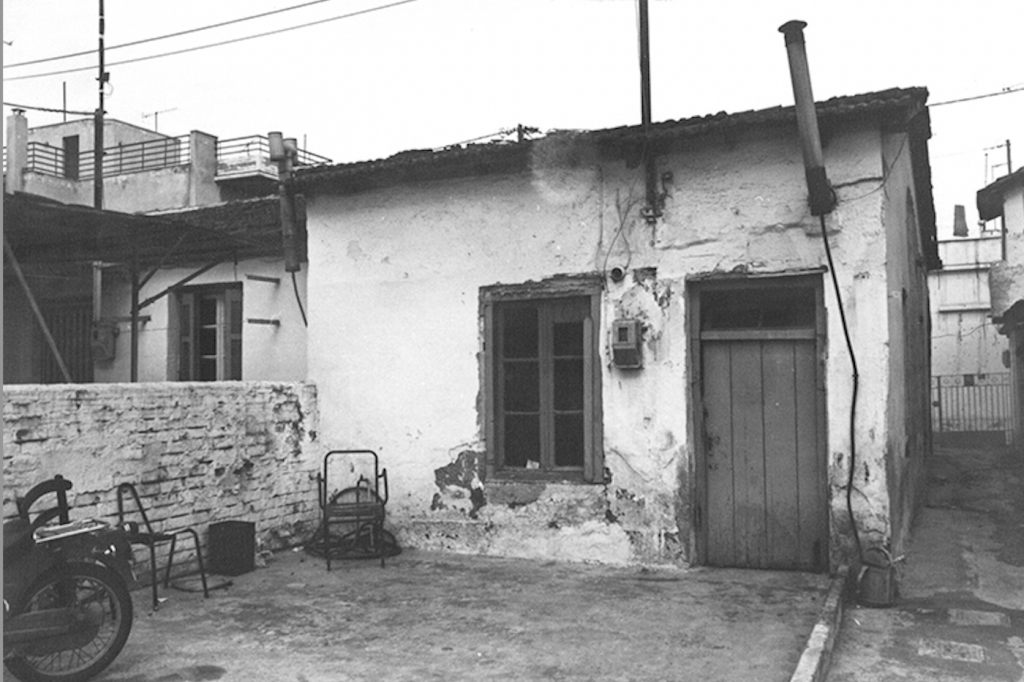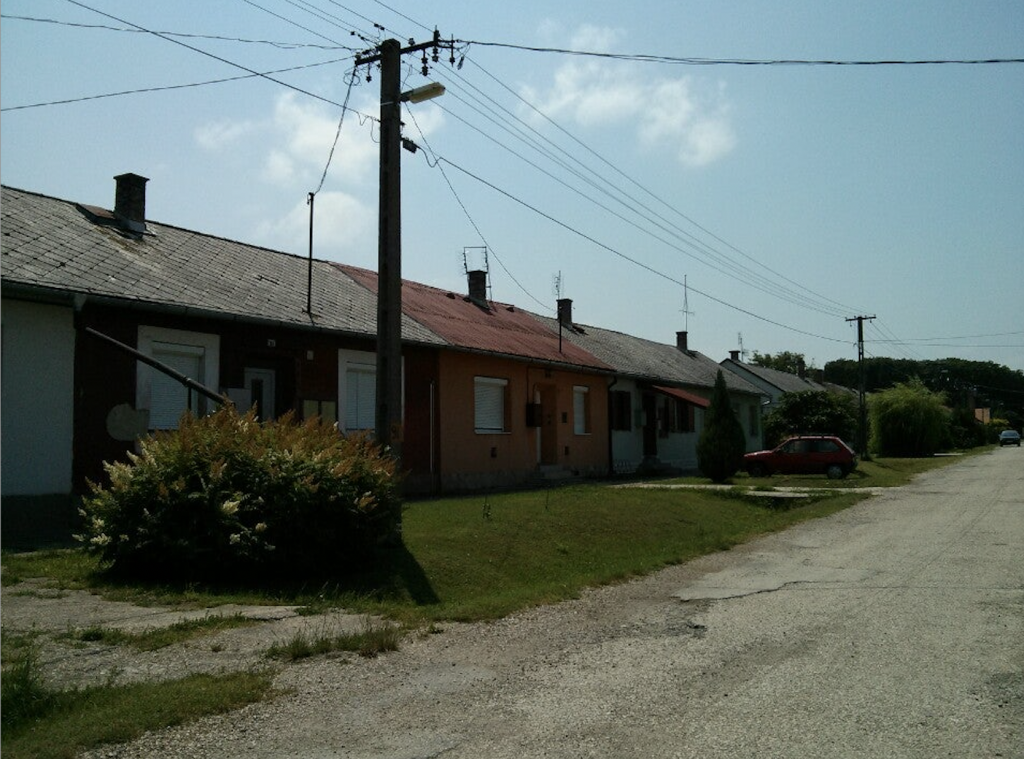By Alexander Billinis*
Stone by stone we built,
A poor corner.
Our lives we enclosed, in Kokkinia (Pireaus) . . .
. . . But the evening, when it came,
It brought the dreams.
It brought us to Pergamum [again],
And to the [Sea of] Marmara.
-Giorgos Dalaras, “Petra-Petra” from the Mikra Asia album, lyrics by Pythagoras
I knew the history. My father taught me it, I read it in the huge library he had, but it only really struck me when I moved to Greece, that the legacy of the population exchange, and the scar of the Asia Minor Catastrophe, is everywhere in Greece. Its legacy and wounds are simply inescapable. Its presence is either utterly obvious, or, more likely, hidden in plain sight, in the homes they built, and those left behind.
As I said, I had some personal frame of reference of the Asia Minor legacy in Greece before we moved there, perhaps more than most Greek Americans. My sister is married to a Pontic Greek born in Kavala; my father grew up in 1930s/40s Pireaus, where several districts of the city, such as the abovementioned Kokkinia were home to Asia Minor refugees.

However, it was my wife, a Serbian-American architect, who really brought the architectural wound of the refugee era to my attention. We lived in Maroussi, right next to Nea Ionia, in Athens. She quickly realized that a “Nea” implied a lost homeland, usually in Asia Minor but also from Bulgaria or Turkish Thrace. Athens was full of Neas: Nea Smyrni, Nea Philadelphia, Nea Chaldikonia.
While Athens is anyway a city planner’s nightmare, these districts were particularly haphazard. Winding streets, tiny lots where the one-story refugee homes, maybe two rooms with a tiny garden and outhouse, gave way in the 1970s and 1980s to vertical concrete taking every bit of living space, often with steps or illegal but tolerated additions into the street.
I remember sometimes walking from my Maroussi home, on Kapodistriou Street, past ruins of the Roman Aqueduct, to Nea Ionia. Here the streets curved and narrowed, and one way streets were necessary because the lanes were not built for cars. Concrete blocks with the awnings and balconies rise vertically, almost blocking out sunlight, and obscuring those few homes that have remained from the refugee era.

In Macedonia, the legacy of the exchange is even more obvious, the Ano Polis of Thessaloniki and its Ottoman homes both ornate and shabby, were emptied of their Turkish inhabitants to make room for incoming Asia Minor Greeks, even as suburbs and brand new villages sprouted in the environs or the hinterland, often as not sporting a “Nea” in their names. The same thing on a smaller scale occurred in Kavala, where the upper town was emptied of Ottomans and refugee suburbs like mushrooms rose almost overnight to accommodate the massive tide of penniless refugees.
This too was repeated in all of the “Neas”; this tiny plot of land was often all the refugees, who often came from sophisticated and wealthy backgrounds, possessed, and they went vertical, providing for their offspring and descendants. In this, they were often assisted by relatives abroad, economic migrants who continued the uprooted existence, sending needed deutschmarks or dollars, US, Australian, or Canadian.

Having seen the legacy of expulsion and refugees architecturally in Greece, the interest followed me to Serbia, to my wife’s home province of Vojvodina, where Serbs from the mountains of Bosnia and Croatia moved into the expelled Germans’ sturdy farmhouses and townhouses after World War Two. Yugoslavia deported its ethnic Germans en masse after the war as collective punishment. Then, after the dismemberment of Yugoslavia, this same province received hundreds of thousands of Serbian refugees, again from Croatia, Bosnia, and Kosovo.
The architecture, either of the expelled Germans’ homesteads, or the refugees’ hardscrabble attempts to restore their hearths in Vojvodina villages after being uprooted, mute though they were, nonetheless possessed a tragic eloquence. The homes the refugees lived in, and the ones they lost, speak louder to those who will listen than great and known civic monuments.
Further north from our Serbian home, in the vast plains of Hungary, within sight of the Danube River, I caught up with refugee architecture again, specifically Greek, in the village of Beloiannisz (Beloyannis). Greek communist refugees built the village from scratch in the early 1950s, the hamlet resembles a military base with a grid-like streets, but the homes, oh how they reminded me of a more northerly, climate-appropriate version of the refugee houses I saw in Kavala or those remaining in the canyons of a more vertical, concrete Athens.

I also figured that many of the residents in Beloiannisz had been refugees twice. Expelled, often enough from comfortable homes in Asia Minor or Turkish Thrace, they may have grown up in the refugee housing I saw in Kavala, Drama or Nea Ionia, and then ended their days as refugees in the same type of dwelling a thousand kilometers to the north. Conversations with people in Beloiannisz confirmed my educated guess that these people were often Asia Minor refugees or their descendants. One wizened old man had endured three expulsions: from Pontus to Russia, from Russia to Greece, and from Greece to Hungary.
Having seen where the Asia Minor refugees ended up, in Greece and elsewhere, I also had the opportunity to visit parts of Turkey, the lands from which these hapless yet hardy and resourceful refugees had fled. In particular, the I spent time wandering through the villages around Smyrna, such as Urla (Vourla), birthplace of one of Greece greatest bards, George Seferis (Seferiades). Here, and in the village of Foca (Phocea), on the other side of the breathtakingly beautiful Bay of Izmir, I found stately Greek houses, and occasionally the faint traces of Greek letters or a cross on the marble door lintel.
On a quiet Fall day, with the Aegean sun obligingly and benignly bright, the shadows cast could easily be those of its former Greek inhabitants. Not that the current inhabitants look much different, as many of them descend from Turkish refugees from Greece, including the Greek speaking Valaades Muslims of Macedonia or the proudly Cretan Muslims of the Izmir area, many of whom speak a Greek even in the third generation sounding hauntingly like the Cretan I heard while growing up in my Salt Lake City hometown. The Turks have their own stories of expulsion and refugees, as I realized in Smyrna and in Istanbul, where the train from the Attaturk Airport to Taksim Square announced a stop in the suburb of Yeni Bosna (New Bosnia).
Turkey may have been the primary agent of expulsion and genocide, and the seismic effects of Ottoman and Austro-Hungarian disintegration the source of the Serbian refugee saga I saw in its human and architectural form, but the real lesson is that wars create refugees, and being a refugee is a tragedy.
“The land and its buildings never forget” a Serbian once told me, during a rakija (tsipouro) fueled afternoon chat. He referred to the expulsion of the Germans from northern Yugoslavia, but the same could be said for the Serbs’ lost homes in Kosovo or Croatia, whether a charred ruin, empty, like the ghost villages of Asia Minor or crumbling ex-Greek houses in the Phanar District of Constantinople, or ex-Greek houses now Turkish for three generations. All possess a story. Some spectral or aural feeling remains.
The same is there, if we care to find it, in the elegant Turkish homes of Thessaloniki’s Ano Poli or the baroque German homesteads of Vojvodina. But the deepest nostalgia lies in the humbler hamlets of the refugees, wherever they are. These structures in plain sight, hide the human history of a rough yet beautiful neighborhood, and though silent, are among the best cautionary tales against conflict.
*’The Houses I had they took away from me’ – George Seferis (Seferiades), The Thrush.
**Alexander Billinis is an instructor at Clemson University, in South Carolina, USA. He is a licensed attorney, with a former career in law, real estate management, and international banking. He has lived and worked in Greece, the UK, and Serbia, as well as shorter work or study assignments in Bulgaria, Hungary, Germany, and Chile. A citizen of both the United States and Greece, he is married and the father of two teenage children.

